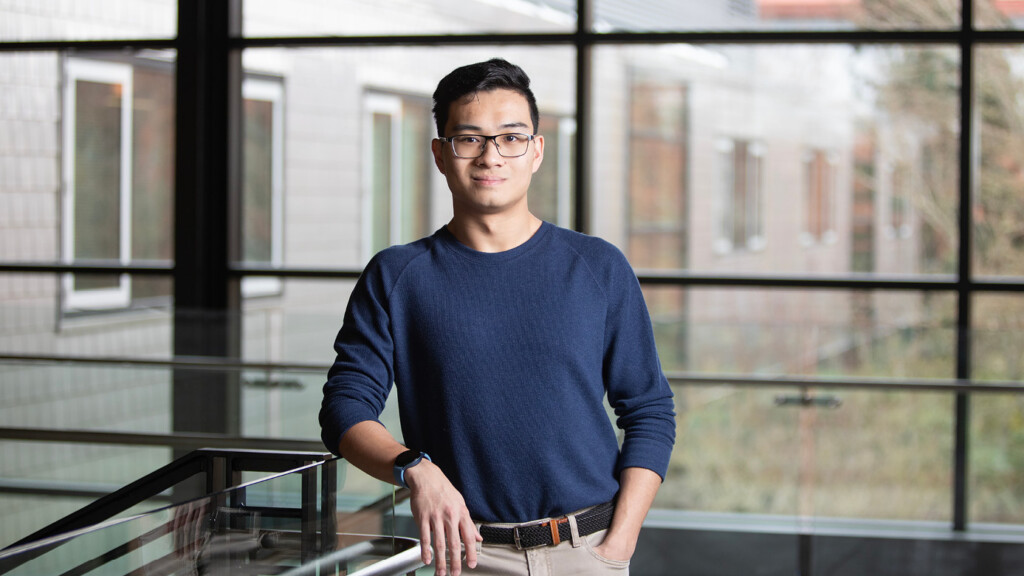Page 197 • (3,056 results in 0.071 seconds)
-

student team finished in the top five of the Interdisciplinary Contest in Modeling, an international contest where teams of undergrad students have 99 hours straight to create a mathematical model addressing a complex social or scientific issue. The top awards typically go to large technical schools, often in China. But this year, PLU’s team finished in the top 5!Duffy Anderson ’24, Matthew Helmer ’24 and Madeline Rue ’25 were one of 1,057 teams to tackle Problem D, which required teams to analyze the
-

Director of Student Rights and Responsibilities Connie Gardner (not pictured) co-teach this PLUS 100 course The concept behind PLUS 100 is a simple but valuable one: a class designed to prepare college freshmen for success, both academic and personal. “In the beginning we talked more about work, time management, that kind of thing,” Martinez said. “But now we’ve got into more social justice, implicit bias, things that have to do more with communication with people.” That ties into what McAdams
-
shares a satirical article believing it is realDisinformationDisinformation is intentionally meant to mislead and deceive such as biased news sources that withhold all the facts. Disinformation often has political, financial, psychological or social motivations.PropagandaPropaganda is true or false information that is funded and communicated by the state in order to persuade. As the lines between private corporations and the government blur, what is propaganda versus what is advertising can be harder
-
primary source is a first-hand account of a situation or event or any original information source before it has been analyzed. Oftentimes, a primary source tells you what was being said about a topic at the time it took place. Below are some examples of primary sources: Statistical data sets Empirical research Literary and art works (novels, plays, poems, paintings) Speeches, diaries, memoirs Historical newspapers Eyewitness reports (interviews, photographs, social media) Secondary: Secondary sources
-

Gilgamesh or the Bible?” These concepts speak about the human condition. It helped me break through academic walls in finance and economics that I could not have without IHON. What was your study away experience like at Oxford? I think it was the best J-term ever. Admittedly, I spent an average of 10 hours a day in one of the Oxford libraries. My tutor pushed me to understand complex social injustices in our world.Study Economics at PLUAre you interested in learning more about how economics can be
-

masked intruders, who fled on foot and exchanged gunfire with the deputy. One suspect was found dead at the scene; another was arrested shortly after on unrelated warrants and faces charges in the crime. McCartney was a 34-year-old Navy veteran. He was married with three young sons. “We lost one of our best,” Sheriff Paul Pastor said in a statement on social media. “I pray for the gracious blessings of strength and peace for his family and friends.”Anyone who wishes to donate to the deputy’s family
-
English requirement is met by taking courses that veterinary schools would recognize as writing or literature courses. Courses in the Humanities, Social Sciences and Arts The majority of veterinary schools have formal requirements for courses in social sciences, humanities and arts. However, often these requirements are waived if the applicant has or will be earning a BA/BS degree. A course in oral communication, either interpersonal or group communication or public speaking, is often
-
English requirement is met by taking courses that veterinary schools would recognize as writing or literature courses. Courses in the Humanities, Social Sciences and Arts The majority of veterinary schools have formal requirements for courses in social sciences, humanities and arts. However, often these requirements are waived if the applicant has or will be earning a BA/BS degree. A course in oral communication, either interpersonal or group communication or public speaking, is often
-
social order. As stability returned in the Middle Ages and then growth in the Renaissance, this memory of Rome became the basis for education: the ideal citizen mastered what the old empire had bequeathed. In fact, the first universities based their curricula around the trivium (grammar, logic, rhetoric) and the quadrivium (arithmetic, geometry, music, astronomy) as outlined by Plato and Cicero. The Early Modern, or Neo-Classical, period adopted Classical models even more closely, but with a
-

and words that they’ve chosen not to say. They’ve heard those words—maybe even used them—but they now understand these words have impact even when the intent is not to hurt. We have to take responsibility for the impact on others, and on ourselves.” Now those original posters— along with newer ones featuring more students, more I-won’t-say-these-words plus faculty and staff —are showing up on 112 billboards throughout the Puget Sound region, in Tacoma Public Schools, on the PLU campus, on social
Do you have any feedback for us? If so, feel free to use our Feedback Form.


